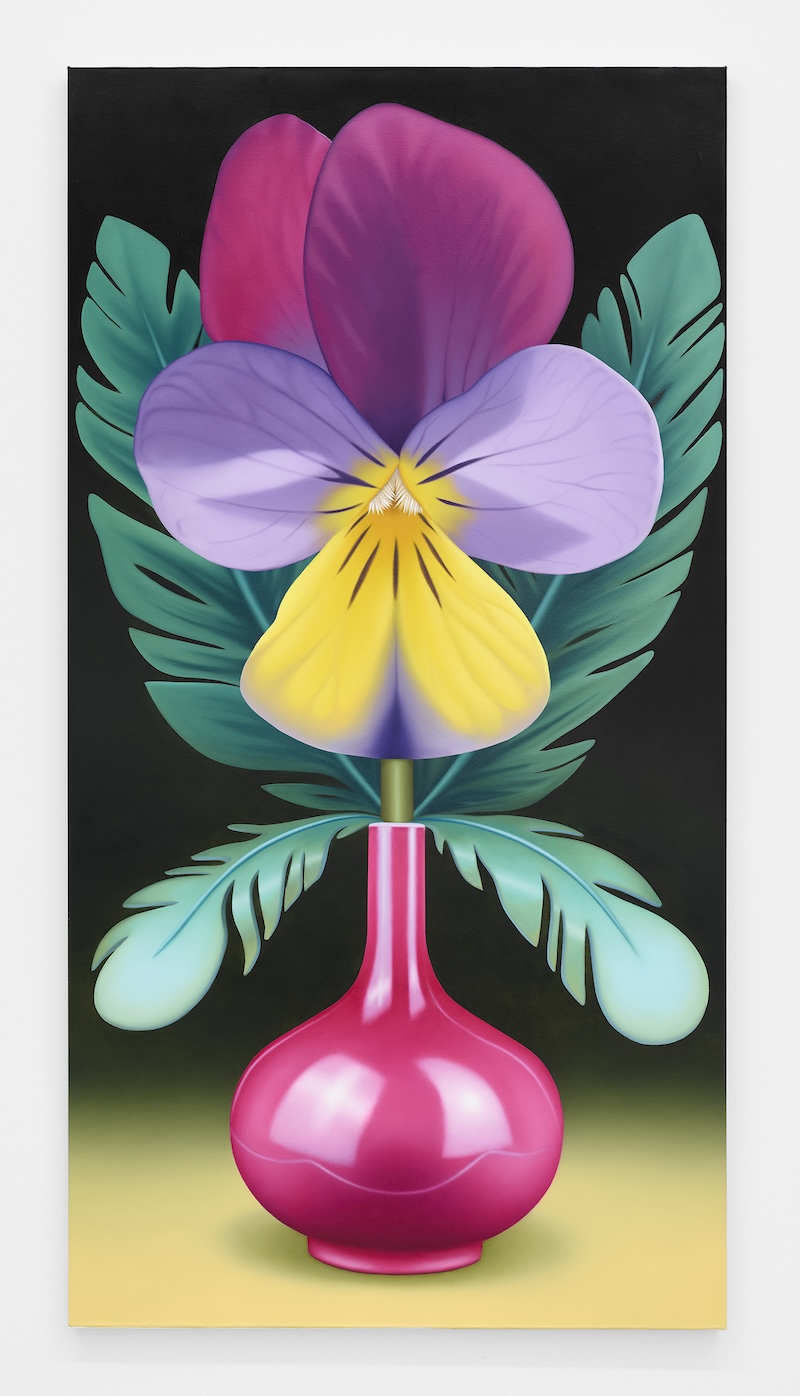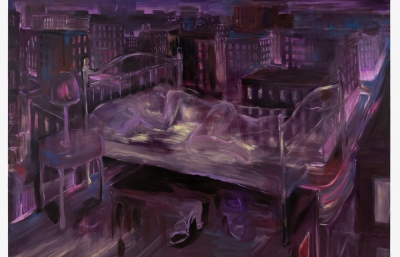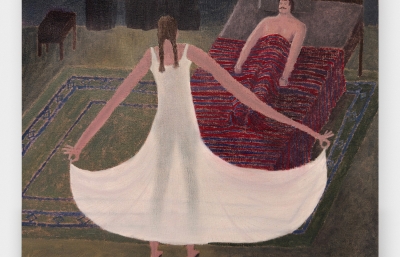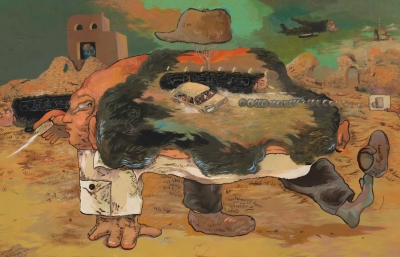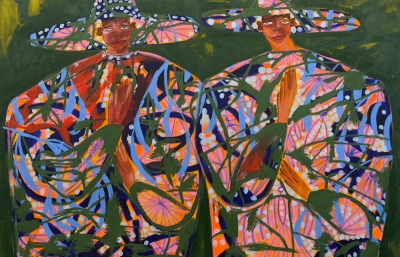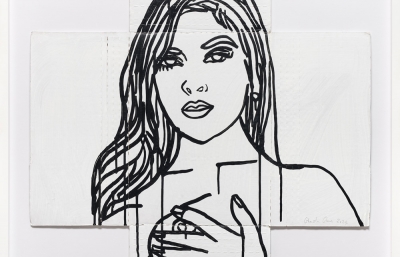The Hole is pleased to present Herbivore, the gallery's summer group exhibition. This plant-forward show gathers artists whose works feature flora in all its forms: flowering, fruiting, sprouting and climbing. From succulents to spores, Herbivore considers why artists so often turn to the botanical world—what it represents, what it absorbs, and what possibilities it holds when figuration falters.
Across media, the show is lush and abundant. British duo Graphic Rewilding grow an eruption of irises in our front windows, welcoming visitors into a space where living and representational plants intertwine. Refracting light across our garden in the entry gallery are a giant resin flower by Ben Godward and bulbous glass vases blown by Hanna Hansdotter. Barry McGee’s animatronic tree sculpture tags the gallery wall like a domesticated plant going rogue. Sophie Parker weaves live plants into her sculptural installation, while Hein Koh’s ceramic sculpture sprouts a giant cactus out of a smoking broccoli pot. Later this month a performance piece by Kembra Pfahler will feature flowers from an even more surprising location.
Some works in Herbivore revel in abundance: Ant Hamlyn’s Sporegasm, a cluster of soft mushrooms, teems with plush fecundity while Theo Rosenblum’s absurdly hung chair sculpture of a giant weed leaf asks us to take plant sex (and furniture) less seriously. Kevin Christy, Ariana Hughes, and Carly Owen Weiss bear fruits, while Caroline Larsen, Nathan Ritterspusch, Pedro Pedro and Vanessa Prager overflow with florals in dense, painterly detail.
The botanical genre you could call it, though it hovers somewhere in the overlap of still life and landscape: Andy Dixon Red Composition with Pomegranite provides a real homage to the masters of still life in a hot pastel pastiche. Laurens Legiers (above) offers small, perplexing paintings where geometric thickets of stippled foliage obscure a traditional old master-style landscape. Is he showing how surface and design have overtaken history and genre—or simply letting his uniquely beautiful paint application method steal focus?
In our past thematic exhibitions like Nature Morte (2021), which revisited the still life, and Manscaping (2022), focused on landscape tropes, we saw how artists return to traditional genres not to repeat them, but to subvert and reanimate. A plant is a subject that carries symbolic weight but allows for formal play—a stand-in for the human figure when a human might say too much—a structure of beauty or a vessel for drama.
Plant life is the substrate of our living world—xylem and phloem or gigantic underground mycelium moving unseen beneath the surface— its cycles mirroring our own. It’s why our sick cultural moment demands we “touch grass.” In Herbivore, the artists lean into that fact not as naturalists, but as stylists and symbolists, inviting us to look closely and bathe our retinas in healing green.










